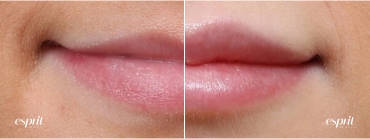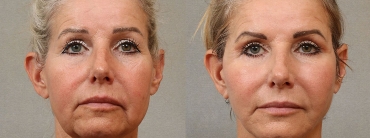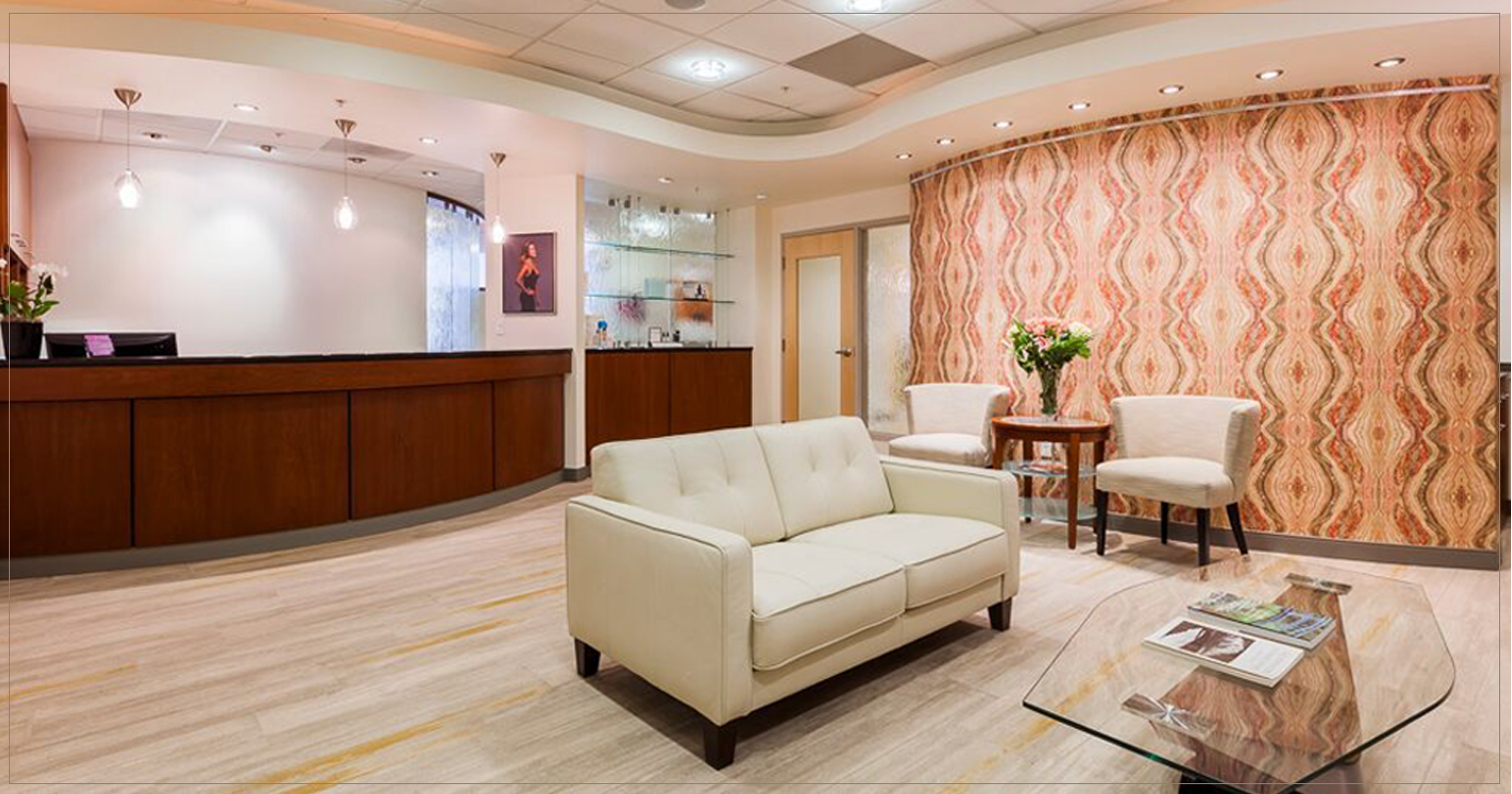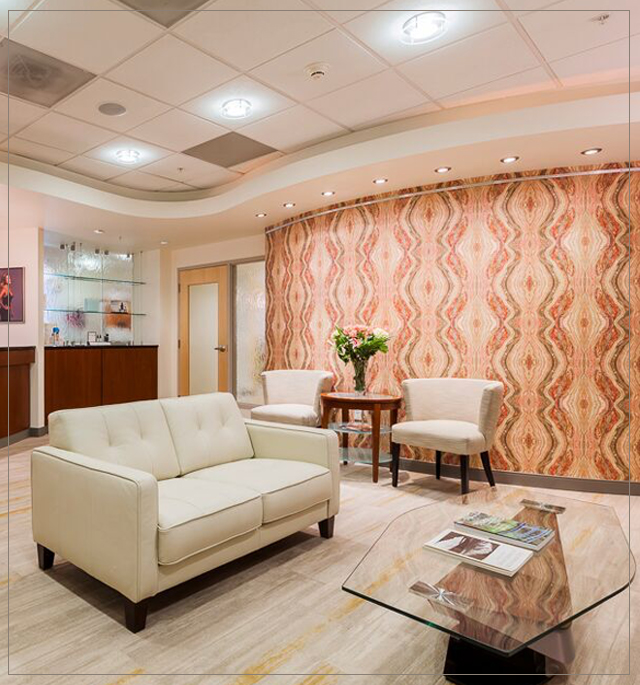Subpectoral Versus Subglandular Placement
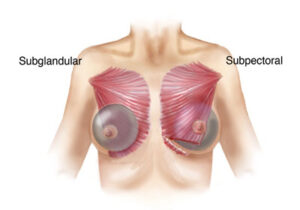
On the left, the breast implant is shown above the pectoralis major muscle. On the right, the implant is under the pectoralis major muscle. Note that the muscle on the right is cut or “released.” This method allows the implant to settle nicely to the base of the breast. The breast implant on the right is above the muscle, with no trauma or damage to the pec muscle or ribs.
Once you have chosen an incision, the next key decision for your breast augmentation is whether to place the breast implants “under or over the muscle.” The muscle referred to is the pectoralis major. Esprit Cosmetic Surgeons performs both approaches to breast implant placement in Portland, OR. Implants positioned above the muscle is becoming the best option for many patients.
Tissue is Needed To Cover Breast Implants
The key issue is the thickness of your tissues and our ability to hide the edges (including ripples) of the breast implants with your soft tissue coverage. When considering your soft tissues in relation to breast augmentation, think of them as the breast tissue padding that is available to cover implants.
Breast Tissue Alone Can Cover Implants
The tissues of the breast can cover breast implants nicely in many patients. It’s the most logical approach to breast augmentation and most gentle and minimally invasive way of doing the procedure. There are many reasons the under the muscle pocket became popular. But the procedure has evolved and now with modern techniques and implants, going above the muscle is gaining popularity and the best choice for many women.
Muscle Can Cover Breast Implants
The pectoralis major is a long, wide, triangular-shaped muscle that begins along the entire breastbone and the ribs at the base of the breast and inserts into the upper arm. This muscle is a thick and strong layer of tissue that can provide excellent padding over breast implants. This is the traditional way of positioning implants, especially in thin women.
Subfascial Placement
Subfascial implant placement is an above the muscle technique where the very thin connective tissue layer between the breast tissue and the muscle is used for implant placement. The fascia is very thin (than 1 mm thick) but can still provide advantages to the classic over the muscle technique. Subfascial placement is a very popular technique right now, but not necessarily better than the classic subglandular method for many patients. In looking at the pros and cons of above or under the muscle, it’s best to think of subfascial and subglandular placement as being the same.
Women With Thick Breast Tissue Padding
In women with thick layers of breast skin, fat, and glandular tissue there is good padding to cover breast implants. In such women, the additional padding provided by the pectoralis major muscle is not needed. Going with implants above the muscle these in these women has many advantages.
Women With Thin Breast Tissue Padding
Many women in Portland have thin breast tissue, especially in the upper breast and cleavage areas. This can make breast implants more visible over time, showing ripples.
To avoid this, placement under the muscle has been favored. The pectoralis muscle provides excellent padding over the implants, especially in the upper and middle parts of the breast and cleavage area. These are the key areas to protect against ripples, as they are visible in low-cut tops or bikinis. However, with the right implants, technique, and sometimes the use of fat grafting, implants can be positioned above the muscle even in most thin women.
Advantages Of Over-muscle Breast Implants
Some patients prefer a very round, augmented look, which over-muscle placement can help achieve. Distortion of the breasts with flexion of the chest muscles is nearly eliminated. And, over the muscle is much gentler and less disruptive surgery. In some cases, placing implants over the muscle can improve the shape and position of the breasts, especially for women with mildly sagging or tight, constricted breasts.
Pain after surgery is less with implants placed over the muscle. However, with our gentle, 24-hour recovery technique, this difference is only noticeable in the first few days after surgery.
Disadvantages Of Over-muscle Breast Implants
There is an increased risk of visible implant ripples. There is an increased risk of seeing the edges of the breast implants and a “bubble-like,” round look. These issues can be managed in most patients using advanced techniques, like adding fat grafting to the cleavage and upper pole of the breasts.
Advantages To Under-muscle Implants
One key benefit of placing implants under-muscle is that mammograms are more accurate with under-muscle implants. Some women in Portland also prefer the look of under-muscle implants. They tend to give the upper part of the breast a more natural slope and avoid the “bubble-like” appearance that can happen with some over-muscle implants. However, with the right implant selection, like the Motiva Ergonomix implant, the upper breast can have a natural slope when placed above the muscle.
Disadvantages Of Under-muscle Breast Implants
With breast implants under the muscle, movement of the implants and breasts with flexion of the muscle will occur. In most Portland patients, the movement is not severe and is not bothersome. Indeed, we have placed the implants under the muscle even in body builders. In some patients the movement is bothersome. Also, surgery under the muscle is more invasive and damaging to the natural anatomy of the chest. Going above the muscle eliminates these problems.
More Advantages To Subpectoral Implants
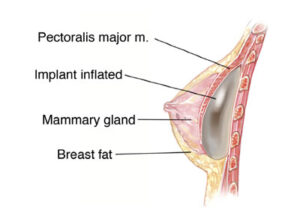
Here’s a breast implant in the subpectoral space, under the pectoralis major muscle. Note that the muscle does not cover the lower part of the implant. The implant is held in position at the base of the breast with the support of the skin and fatty connective tissue, not the muscle. If added support is needed an “internal bra” with mesh is used.

This image shows a breast implant in the subglandular space, above the pectoralis major muscle. This is basically the same position as used with subfascial placement. If added support is needed to keep the implant in a good position an “internal bra” with mesh is added.
Breast Implant placement is important to achieve natural results. Contact Esprit® Cosmetic Surgeons in Portland for more information on over-muscle vs. under-muscle breast augmentation. Call (503) 420-7173 or book your consultation online today.


